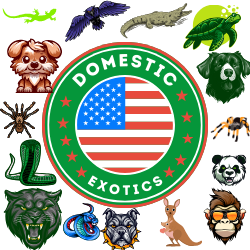Frequently Asked Questions
Please read our FAQ before sending us a message.
The food used for snakes should have roughly the same diameter as the widest part of the snake’s body. It is usually better to feed snakes a single appropriately-sized prey item, rather than offer multiple smaller ones. Snakes have highly mobile and articulated jaws which enable them to deal with prey that may seem very large in comparison to their mouth.
As snakes grow the food offered to them should increase in size as well. The length of time your snake needs to stay on pinkies for example, depends on how quickly your snake grows. Most small snakes which start off on pinkies will move over quite quickly to fluffs, usually after two to three months. Older snakes grow more slowly so would be on the same size of prey for a much longer period of time.
This varies depending on the age and species of your lizard. In store, we feed our young bearded dragons at least twice a day, with at least ten insects per dragon, as young beardies are active and grow fast. We feed our leopard geckos and crested geckos live food once a day, in the evening, just before they start to become active. If you find your lizard is not eating all the insects offered, you might be giving them too many.
Remember to remove any uneaten insects at night for diurnal reptile species. These are species which are active during the day and sleep at night.
Younger bearded dragons should have about 60% live food and 40% plant material in their diet. Older dragons have 40% live food and 60% plant material. If they are not breeding, older adult dragons may only need live food 3-4 times a week.
Offering food to very young snakes twice a week is best as this is the schedule they are used to in our stores. As they grow older it is best to reduce this to every 7-10 days. The key point is to make sure to regularly check your snake’s body condition to ensure that you are not under or over-feeding. A healthy snake with good body condition has a body shape almost like a rounded triangle, like a plectrum. If it is totally round, or loaf shaped it is likely to be overweight. If it is more sharply pointed, or with a clear keel along its back it is likely to be underweight.
It’s less common for lizards to refuse to feed compared to snakes and the steps to take are similar. Always check their environment first. Check its weight and make sure it doesn’t lose weight rapidly if it refuses to feed for more than a couple of days. Sometimes changing the food type can encourage them to feed. There are lots of other techniques to try, but it’s best to discuss these with one of our store colleagues or a reptile vet.
If a snake is having trouble shedding their skin, make sure that they have a damp hide to use as well as a water bowl large enough for them to coil up in. You can also consider raising the humidity of the whole vivarium a little. If the skin still doesn’t come off after a few days, bathing the snake twice daily in slightly warm water can help. If bathing doesn’t work then we would advise to contact our colleagues in store for more tips specific to your snake and setup, or a reptile vet.
UVB lights are essential for most diurnal reptile species (e.g. bearded dragons) and are considered to be of physiological benefit for all reptiles. We would recommend that you provide UVB light for all reptiles, as even nocturnal reptiles may still benefit from it.
Send us an email / CALL OR TEXT (209) 782-7702
